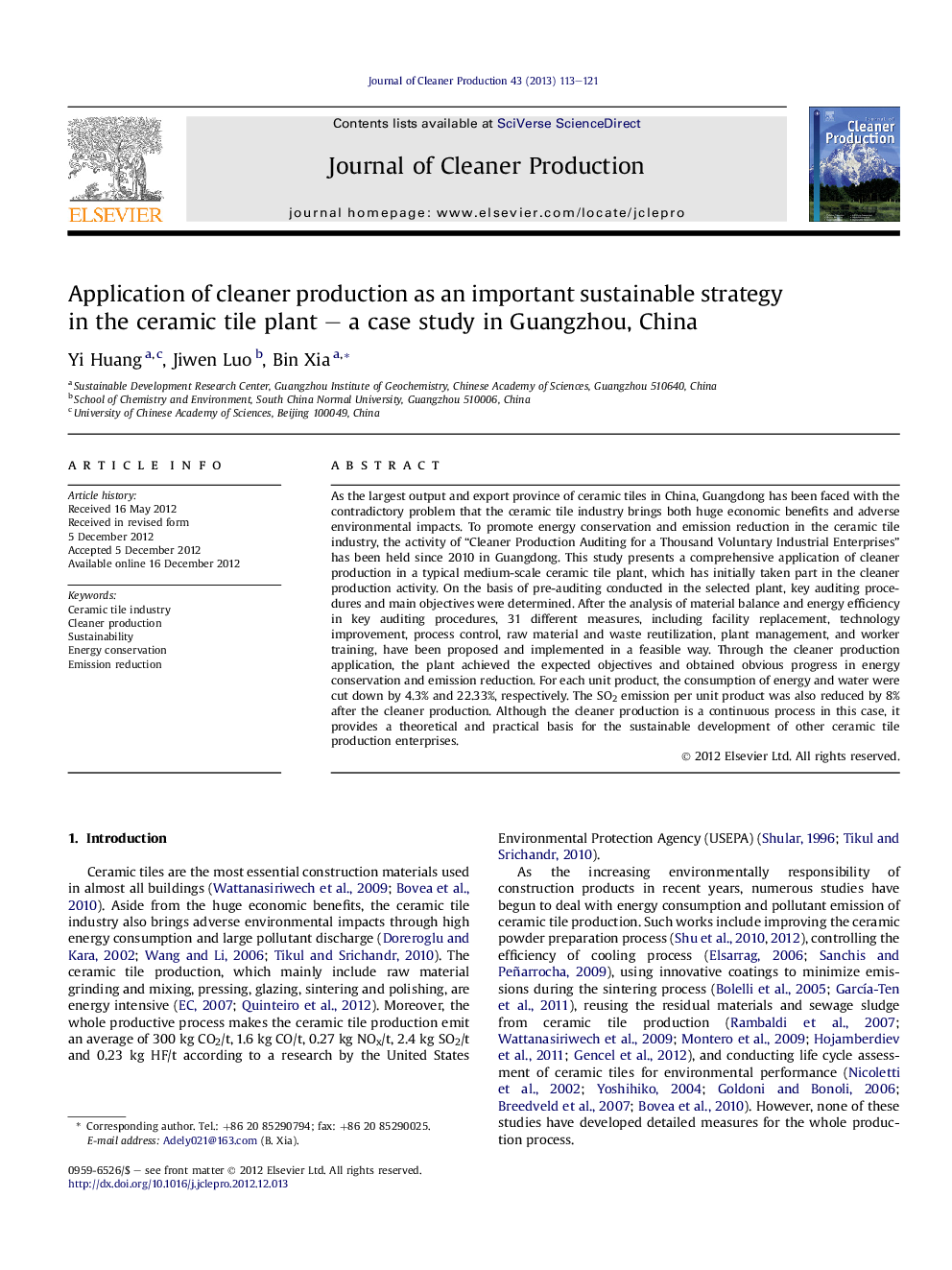| Article ID | Journal | Published Year | Pages | File Type |
|---|---|---|---|---|
| 1745451 | Journal of Cleaner Production | 2013 | 9 Pages |
As the largest output and export province of ceramic tiles in China, Guangdong has been faced with the contradictory problem that the ceramic tile industry brings both huge economic benefits and adverse environmental impacts. To promote energy conservation and emission reduction in the ceramic tile industry, the activity of “Cleaner Production Auditing for a Thousand Voluntary Industrial Enterprises” has been held since 2010 in Guangdong. This study presents a comprehensive application of cleaner production in a typical medium-scale ceramic tile plant, which has initially taken part in the cleaner production activity. On the basis of pre-auditing conducted in the selected plant, key auditing procedures and main objectives were determined. After the analysis of material balance and energy efficiency in key auditing procedures, 31 different measures, including facility replacement, technology improvement, process control, raw material and waste reutilization, plant management, and worker training, have been proposed and implemented in a feasible way. Through the cleaner production application, the plant achieved the expected objectives and obtained obvious progress in energy conservation and emission reduction. For each unit product, the consumption of energy and water were cut down by 4.3% and 22.33%, respectively. The SO2 emission per unit product was also reduced by 8% after the cleaner production. Although the cleaner production is a continuous process in this case, it provides a theoretical and practical basis for the sustainable development of other ceramic tile production enterprises.
► Powder preparation step and sintering step consumed most of the resources. ► Material balance analysis was used for developing cleaner production measures. ► 31 measures were suggested in six aspects and implemented in different schedule. ► Water consumption per unit product reduced by 22.3% after cleaner production. ► Comprehensive energy consumption per unit product was cut down by 4.3%.
